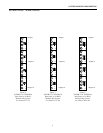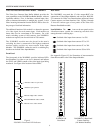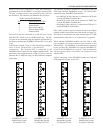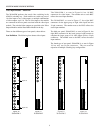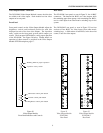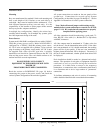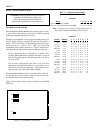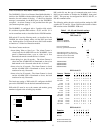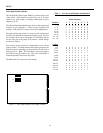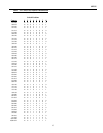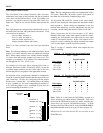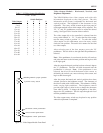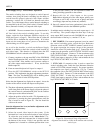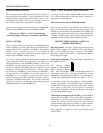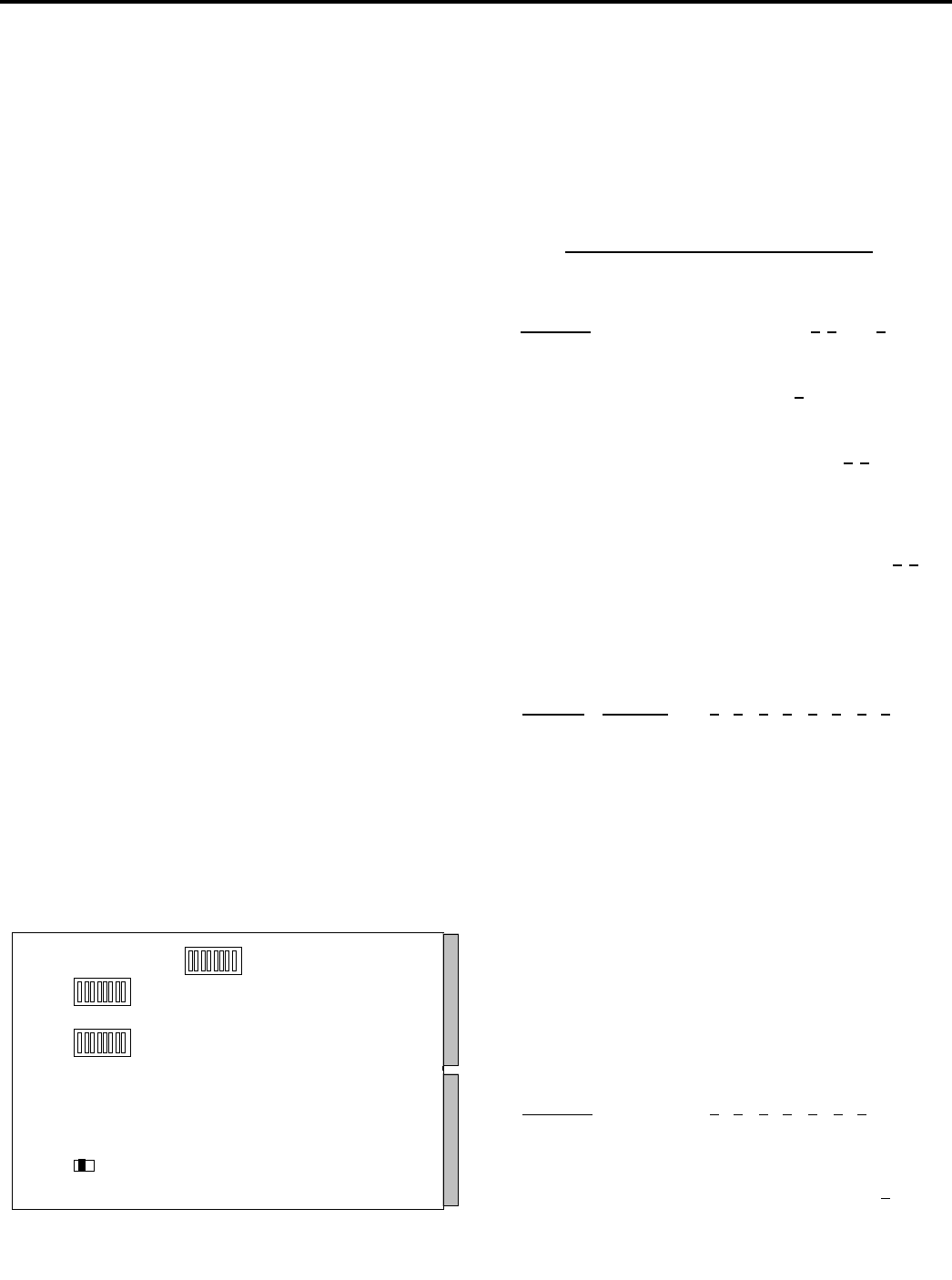
SETUP
Video Loss Detector Data Buffer Module Switches
The 2010DBVL (Video Loss Detector Data Buffer Module) is
similar to the 2010DB, with the added capability of video loss
detection for each camera of the bay. A video loss detection
message is transmitted via the RJ45 port on the 2010DBVL
rear panel. An Alarm Contact is also provided from this port
(see connector pinouts, page 7).
The 2010DBVL is configured with a 2-position slide switch,
S1, and three 8-position DIP switches: S2, S3, and S4. S1 is
set for normal/test mode, as described for the 2010DB module.
DIP switch S2 sets the filtering mode, as described for the
2010DB, the Alarm Contact mode, and the RJ45 port baud
rate. Switch position 2 of S2 must be set to ON for the module
to function as a Video Loss Detection module.
The Alarm Contact modes are:
Alarm during Video or Sync Loss - The Alarm Contact is
closed and the ALARM LED on the 2010DBVL front
panel is illuminated when a sync or video loss is first
detected; both remain on until the loss is cleared.
Alarm during loss, plus 10 seconds - The Alarm Contact is
closed and the ALARM LED is illuminated as above, but
both remain on for 10 seconds after the loss is cleared.
Alarm at loss for 10 seconds - The Alarm Contact is closed
and the ALARM LED is illuminated as above, but both
remain on for only 10 seconds.
Alarm at loss for 20 seconds - The Alarm Contact is closed
and the ALARM LED is illuminated as above, but both
remain on for only 20 seconds.
The baud rate setting of DIP switch S2 configures the RJ45
port on the 2010DBVL for the desired communications rate.
DIP switch S3 must be set to the camera and monitor group
numbers assigned to the switching bay modules.
DIP switch S4 sets the type of communication used via the
RJ45 port and enables or disables the 2010DBVL front panel
LED's. This port may be configured for RS-232, RS-422, or
RS-485 communications.
The following tables show the switch position settings for DIP
switches S2, S3, and S4. Figure 26 shows the location of these
DIP switches on the 2010DBVL PCB card.
Table 2 - S2, S3, and S4 switch settings
1=On; 0=Off; X=Don't care
DIP Switch S2
Function 2 3 6
Video Loss Enabled 1 X X
Video Loss Disabled 0 X X
1
Pass all information 1
Pass only specified information 0
4 5
Alarm during Video or Sync loss 0 0
Alarm during loss, plus 10 seconds 1 0
Alarm at loss for 10 seconds 0 1
Alarm at loss for 20 seconds 1 1
7 8
1200 Baud Rate 0 0
2400 Baud Rate 1 0
4800 Baud Rate 0 1
9600 Baud Rate 1 1
DIP Switch S3
Camera Monitor 1 2 3 4 5 6 7 8
1-256 1-16 X X 0 0 X 0 0 X
257-512 1-16 X X 1 0 X 0 0 X
513-768 1-16 X X 0 1 X 0 0 X
769-1024 1-16 X X 1 1 X 0 0 X
1-256 17-32 X X 0 0 X 1 0 X
257-512 17-32 X X 1 0 X 1 0 X
513-768 17-32 X X 0 1 X 1 0 X
769-1024 17-32 X X 1 1 X 1 0 X
1-256 33-48 X X 0 0 X 0 1 X
257-512 33-48 X X 1 0 X 0 1 X
513-768 33-48 X X 0 1 X 0 1 X
769-1024 33-48 X X 1 1 X 0 1 X
1-256 49-64 X X 0 0 X 1 1 X
257-512 49-64 X X 1 0 X 1 1 X
513-768 49-64 X X 0 1 X 1 1 X
769-1024 49-64 X X 1 1 X 1 1 X
DIP Switch S4
Function 1 2 3 4 5 6 7
RS-232 1 1 0 0 0 0 0
RS-422 0 0 1 1 0 0 0
RS-485 0 0 1 1 1 1 0
8
Front Panel LED's ON 1
Front Panel LED's OFF 0
13
1
8
1
8
S3
S2
1
8
S4
S1
Figure 26 - DBVL Data Buffer Card Switches



